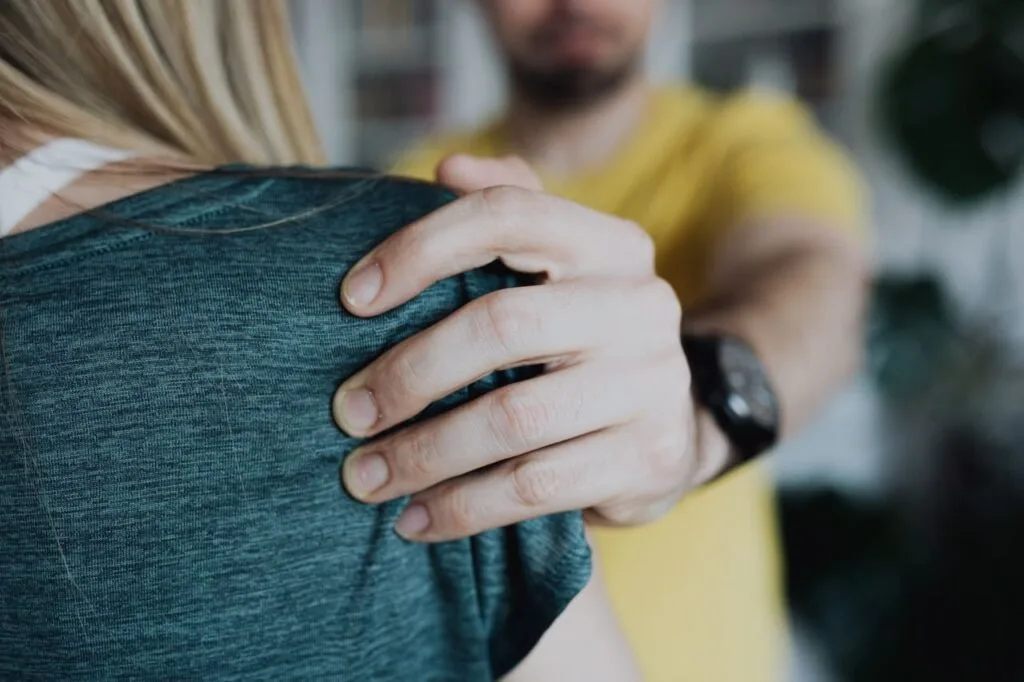Domestic Violence Statistics By State

Domestic violence not only affects individual victims but also causes repercussions for families and the wider community. Those affected may struggle to maintain employment or find housing. Children exposed to domestic violence are more likely to face behavioral issues. Regrettably, communities with high rates of such abuse often experience higher-than-average levels of crime.
There are many options available to aid victims of domestic abuse, whether they are you or someone you know. Call 1-800-799-SAFE (7233) to reach the National Domestic Violence Hotline.
Understanding Domestic Violence
Domestic violence is a deeply concerning issue that affects individuals and families across various communities. It encompasses a range of harmful behaviors, including physical violence, emotional abuse, sexual assault, and coercive control. At its core, domestic violence refers to the misuse of power and control by one intimate partner against another, leading to a pattern of abusive behavior.
It is essential to gain a comprehensive understanding of domestic violence, its definition, and its various forms in order to recognize and address this pervasive problem. By delving into the semantic points of domestic violence, including its definition and types, we can shed light on the complexity of this issue and work towards its prevention and support for survivors.
Importance of Domestic Violence Statistics
The importance of domestic violence statistics cannot be overstated, as they play a crucial role in raising awareness and understanding the true extent of this pervasive issue. Statistics provide a quantitative representation of the prevalence and impact of domestic violence, offering insights into the scale of the problem at both the national and state levels. By gathering and analyzing data, we can uncover patterns, trends, and disparities, which are essential for identifying areas of concern and directing resources where they are most needed.
Domestic violence statistics enable us to assess the effectiveness of current policies, interventions, and support systems. They inform advocacy efforts by providing evidence-based information to policymakers, organizations, and individuals working toward the prevention and elimination of domestic violence. Accurate and up-to-date statistics also help in measuring progress over time, evaluating the impact of interventions, and shaping future strategies.
At the state level, domestic violence statistics offer a localized perspective, highlighting the unique challenges and dynamics within specific communities. They can help identify hotspots, areas with higher prevalence rates, and factors contributing to the problem. This granular understanding allows for targeted interventions, allocation of resources, and tailored support services to address the needs of survivors and prevent future incidents.

National Overview of Domestic Violence Statistics
Every year, over 12 million women and men in the US fall prey to intimate partner physical violence, stalking dating abuse, or rape. Shockingly, on average, 20 people every minute become victims of these heinous acts.
About 29% of women and 10% of men in the US have experienced rape, physical violence, or stalking by a partner, which has adversely impacted their daily functioning.
Nearly 15% of US women (14.8%), and 4% of men, have suffered injury due to intimate partner violence, including rape, physical violence, and/or stalking.
Around 1 in 4 women (24.3%) and 1 in 7 men (13.8%) aged 18 and older in the US have endured severe physical violence from their partner at some point in their lives.
In the United States, more than one in three women (35.6%) and one in four men (28.5%) have encountered rape, physical abuse, or stalking by a partner at some point in their lives.
Almost half of both women and men in the US have been subjected to psychological aggression by an intimate partner during their lifetime — 48.4% and 48.8%, respectively.
Intimate partner violence tends to be most prevalent among women aged 18 to 34.
An overwhelming majority of women- 77% of ages 18 to 24, 76% of ages 25 to 34, and 81% of ages 35 to 49- who are victims of intimate partner violence have suffered the same fate previously at the hands of the same offender.
Seeking Legal Assistance for Domestic Violence
Seeking legal assistance is of paramount importance for domestic violence victims who are in need of support and protection. Legal professionals specializing in domestic violence cases play a crucial role in guiding victims through the legal processes, ensuring their rights are upheld, and providing them with the necessary legal remedies. By seeking legal assistance, domestic violence victims can access a range of resources and services that are designed to help them navigate the complexities of the legal system and secure the protection and justice they deserve.
Various resources are available to support domestic violence victims in their quest for legal assistance. Victim advocacy organizations and support services offer valuable guidance, emotional support, and information about legal rights and options in domestic violence situations. These resources can connect victims with legal aid programs, pro bono legal services, and legal clinics that provide free or low-cost legal representation. Helplines and hotlines staffed by trained professionals are also crucial in offering immediate support, guidance, and referrals to appropriate legal services. These helplines ensure that domestic violence victims can access assistance at any time, empowering them to make informed decisions about seeking legal aid.

Protective Orders and Legal Rights
In the United States, protective orders serve as a crucial legal tool to provide immediate protection and safety to victims of domestic violence. Also known as restraining orders or orders of protection, they are court-issued directives that restrict the abusive individual from contacting or coming near the victim. Protective orders can outline specific provisions such as maintaining a certain distance, refraining from any form of communication, or prohibiting the abuser from possessing firearms. These orders are designed to create a legal barrier between the victim and the perpetrator, helping to prevent further harm and ensuring the victim’s safety.
Alongside protective orders, victims of domestic violence in the US have specific legal rights and remedies to protect themselves and seek justice. These rights include the right to a safe living environment, the right to be free from violence and abuse, and the right to access legal support and resources. Victims have the right to report incidents of domestic violence to law enforcement, who are responsible for investigating and taking appropriate action. Legal remedies may include pursuing criminal charges against the abuser, seeking compensation for damages through civil litigation, and obtaining custody and visitation orders to protect the well-being of any children involved.
It is important for victims of domestic violence to be aware of their legal rights and options. Legal assistance, victim advocacy organizations, and domestic violence support services can provide valuable information, guidance, and representation to help victims understand and exercise their legal rights effectively. By utilizing protective orders and accessing legal remedies, victims who report experiencing domestic violence can assert their legal protections and pursue the justice and safety they deserve.
Laws and Regulations Regarding Domestic Violence
The United States has a legal framework consisting of state-specific laws and regulations aimed at addressing and combating domestic violence. Each state has its own set of statutes and legislation that define domestic violence, outline legal protections, and establish penalties for offenders. These laws typically encompass various forms of abuse, including physical violence, emotional abuse, sexual assault, and coercive control. They provide a legal foundation for addressing domestic violence cases, ensuring that victims have access to protection, support, and justice.
State laws regarding domestic violence may cover a range of aspects, including the issuance of protective orders, mandatory reporting requirements for certain professionals, the provision of victim services, violence prevention programs, and the availability of legal remedies. These laws are designed to provide victims with legal rights and resources, encourage reporting, and hold offenders accountable. They also often incorporate provisions for the coordination of efforts among law enforcement, courts, social service agencies, and community organizations to provide a comprehensive response to domestic violence cases.
Understanding the specific laws and regulations related to domestic violence allows for informed decision-making, appropriate legal action, and access to available support services. By establishing a legal framework that addresses domestic violence comprehensively, the United States aims to protect victims, prevent future incidents, and promote a society free from the scourge of domestic violence.

Impact of Domestic Violence on Mental Health
The impact of domestic violence on mental health in the United States is profound and far-reaching. Individuals who experience domestic violence often suffer severe psychological consequences as a result of the trauma they endure. Continuous exposure to abuse, whether it be physical, emotional, or sexual violence, can lead to a range of mental health issues.
Survivors may develop symptoms of post-traumatic stress disorder (PTSD), experiencing intrusive thoughts, flashbacks, nightmares, and heightened anxiety or hypervigilance. The trauma of domestic violence can profoundly disrupt an individual’s sense of safety, causing them to constantly anticipate harm, and leading to ongoing emotional distress.
Mental Health Impacts
Furthermore, domestic violence can contribute to the development of other mental health conditions, such as anxiety and depression. The persistent fear, stress, and isolation that accompany domestic violence can erode an individual’s self-esteem and confidence, leading to feelings of worthlessness, hopelessness, and sadness. Victims who experienced domestic violence may also experience difficulties in forming and maintaining relationships, trust issues, and a distorted sense of self. These mental health consequences can have long-lasting effects on the overall well-being and quality of life of survivors.
It is essential to recognize the impact of domestic violence on mental health in the United States and to provide comprehensive support and resources to survivors. Accessible mental health services, trauma-informed care, and specialized interventions can help survivors heal from the psychological effects of domestic violence, rebuild their lives, and regain a sense of safety, self-worth, and emotional well-being.
Risk Factors for Domestic Violence
Identifying the risk factors associated with domestic violence is crucial for understanding and preventing this harmful behavior. Domestic violence can stem from a combination of various factors that contribute to an increased likelihood of abuse within relationships. By recognizing these risk factors, we can better assess the potential for domestic violence and work toward early intervention and prevention strategies.
History of Domestic Violence
One common risk factor for domestic violence is a history of violence or abuse within the family. Individuals who have witnessed or experienced violence during their upbringing may be more likely to engage in abusive behavior or become victims themselves. Additionally, power imbalances and control issues within relationships can contribute to domestic violence. When one partner seeks to assert dominance and control over the other, it creates an environment conducive to abusive behavior.
Substance Abuse
Substance abuse, such as alcohol or drug addiction, is another risk factor associated with domestic violence. The disinhibiting effects of substances can exacerbate existing conflicts and escalate aggression within relationships. Substance abuse can impair judgment, increase impulsivity, and lower inhibitions, leading to a higher risk of abusive behavior.
Alternative Risks
Other risk factors for domestic violence include social and economic factors, such as unemployment, financial stress, and social isolation. These factors can increase tension and strain within relationships, potentially leading to abusive dynamics. Additionally, cultural and societal norms that perpetuate gender inequality and condone violence can contribute to the risk of domestic violence.

Conclusion
Key findings from the domestic and sexual violence survey and statistics emphasize the importance of addressing this issue comprehensively. It is clear that domestic violence transcends geographic boundaries, affecting people in all states.
In light of these findings, it is crucial for individuals, communities, and society as a whole to take action to end domestic violence. We must raise awareness, educate ourselves and others, and provide support to those affected by domestic violence. Seeking legal assistance and support services is vital for survivors to ensure their safety, protect their rights, and pursue justice. It is our collective responsibility to create a safe and supportive environment that empowers survivors to break free from the cycle of violence.
If you or someone you know is encountering domestic violence, we urge you to seek legal assistance and support. Reach out to local victim advocacy organizations, helplines, and legal aid programs that with domestic violence services can provide guidance, resources, and protection. By standing together, we can make a difference and work towards a future free from domestic violence.
If you are in need of expert legal representation or guidance in Alameda County, reach out to Louis J. Goodman, a former Alameda County Deputy District Attorney with extensive knowledge and experience in the legal field. Mr. Goodman’s expertise and dedication to justice make him a trusted advocate for individuals facing legal challenges. Whether you are seeking assistance in criminal defense, domestic violence cases, or any other legal matter, Mr. Goodman is committed to providing personalized and effective representation.
Take the first step towards securing your legal rights and a favorable outcome by contacting Louis J. Goodman today.
Request A Free Case Evaluation
Fields marked with an * are required
"*" indicates required fields



